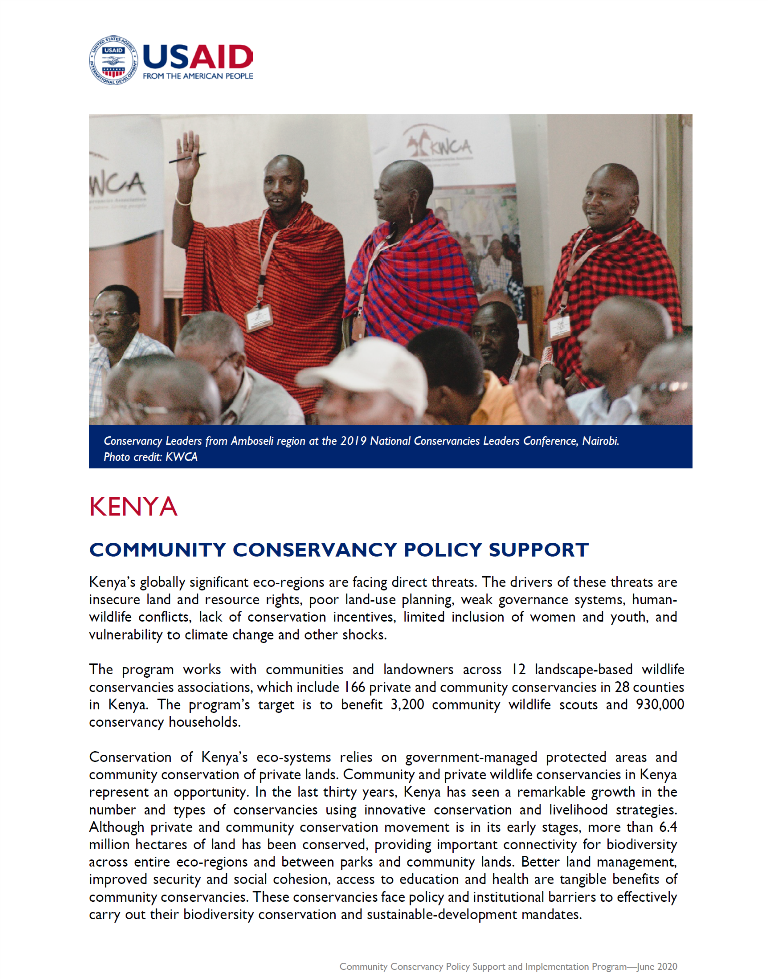Speeches Shim
Kenya’s globally significant eco-regions are facing direct threats. The drivers of these threats are insecure land and resource rights, poor land-use planning, weak governance systems, human-wildlife conflicts, lack of conservation incentives, limited inclusion of women and youth, and vulnerability to climate change and other shocks. The program works with communities and landowners across 12 landscape-based wildlife conservancies associations, which include 166 private and community conservancies in 28 counties in Kenya. The program’s target is to benefit 3,200 community wildlife scouts and 930,000 conservancy households.
Conservation of Kenya’s eco-systems relies on government-managed protected areas and community conservation of private lands. Community and private wildlife conservancies in Kenya represent an opportunity. In the last thirty years, Kenya has seen a remarkable growth in the number and types of conservancies using innovative conservation and livelihood strategies. Although private and community conservation movement is in its early stages, more than 6.4 million hectares of land has been conserved, providing important connectivity for biodiversity across entire eco-regions and between parks and community lands. Better land management, improved security and social cohesion, access to education and health are tangible benefits of community conservancies. These conservancies face policy and institutional barriers to effectively carry out their biodiversity conservation and sustainable-development mandates.


Comment
Make a general inquiry or suggest an improvement.